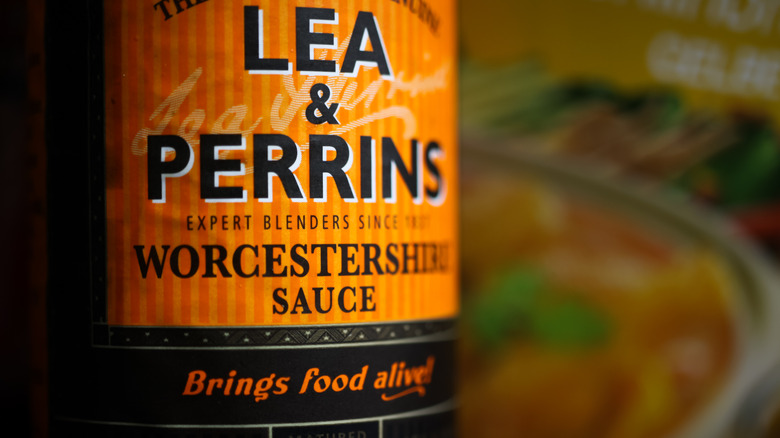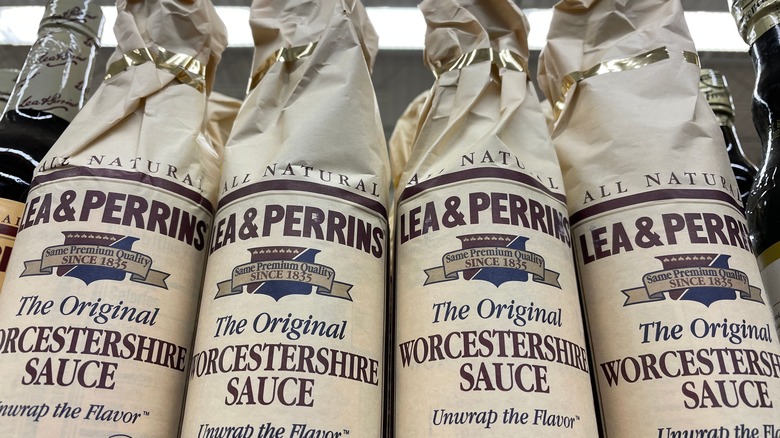What Sets US Worcestershire Sauce Apart From Other Versions
Worcestershire sauce takes its name from the English county where it was created more than 185 years ago. The tangy steak topper and Bloody Mary pepper-upper was originally created in 1835 by two pharmacists, John Lea and William Perrins, with an assist from Lord Sandys. As the story goes, their first attempt didn't taste very good, but after leaving the fermented mixture in the cellar for a couple of years, it turned out to be delicious — or at least wildly popular.
A century later, sales are measured in tens of millions, and the beloved sauce is enjoyed in approximately 140 countries around the globe. What's the secret? There are a host of disparate ingredients used to make Lea and Perrins iconic Worcestershire sauce, including malt vinegar, anchovies, molasses, chilies, cloves onion, garlic, salt, and sugar — as well as proportions that only a privileged few are permitted to know. The resultant mix is fermented for approximately 18 months in holding tanks before its bottled.
However, that's the recipe in the U.K. and most of the rest of the world. But if you're in the U.S. and you love to douse your food in the tangy brown sauce, just know that there is a different recipe used. What exactly does the American version of the bottle entail?
Worcestershire sauce looks and tastes different in America
There is no malt vinegar used in the U.S. version of Lea and Perrins Worcestershire sauce. White vinegar is used instead, as are significantly more salt and sugar. The latter is tripled, and the sodium levels are even higher relative to the U.K. recipe. Another striking difference is that the serving size calls for one teaspoon instead of a tablespoon, which is the serving size for the U.K. version.
When exactly a separate version was created for the U.S. is not public knowledge. However, it appears to have been a progressive innovation. An article in The New York Times published in 2000 states, "The formula is the same everywhere, unlike that for Coca-Cola, which adapts its recipe to suit local variations in taste." Nine years later, however, another article came out with the news that there was a variation specifically formulated for the U.S. market.
Of course, in addition to tasting different, the iconic sauce also looks distinct in the U.S. Rather than the iconic orange and black labels used in the U.K., the American version is sold swaddled in a papery beige packaging, a practice reportedly instituted during the 19th century to keep the bottles safe during overseas shipping.

